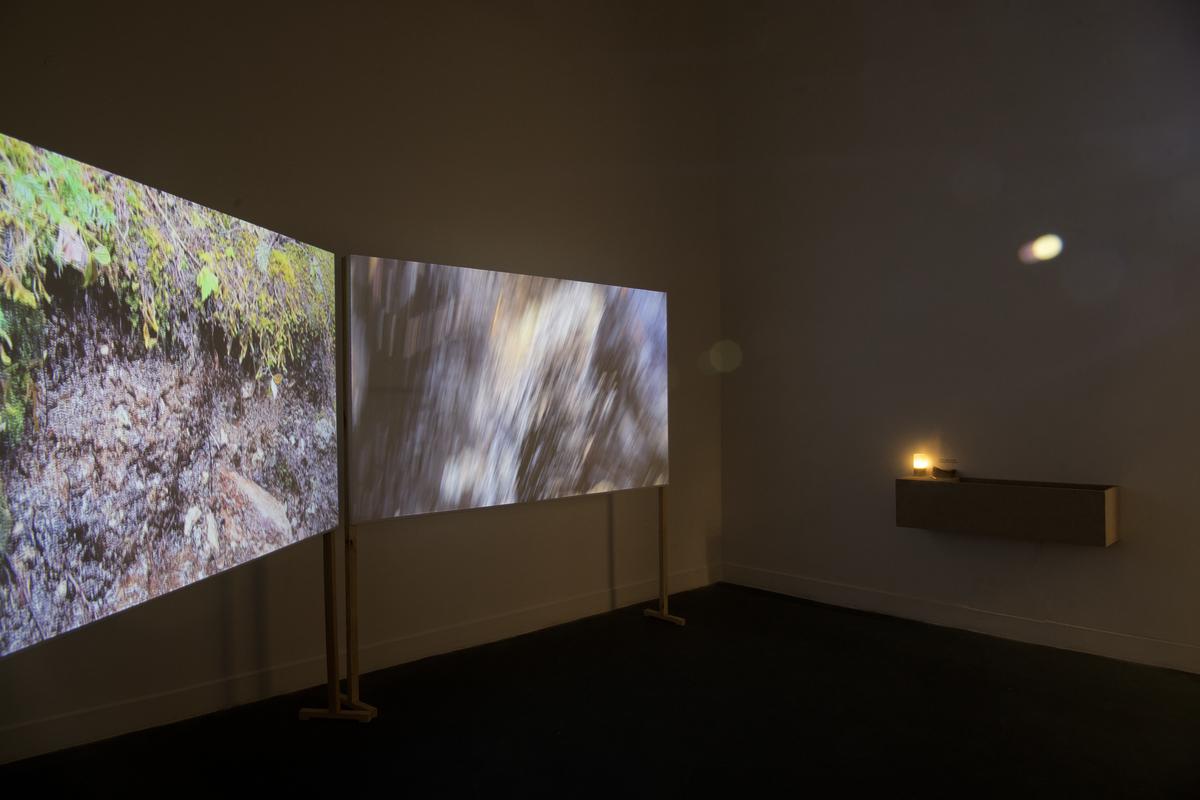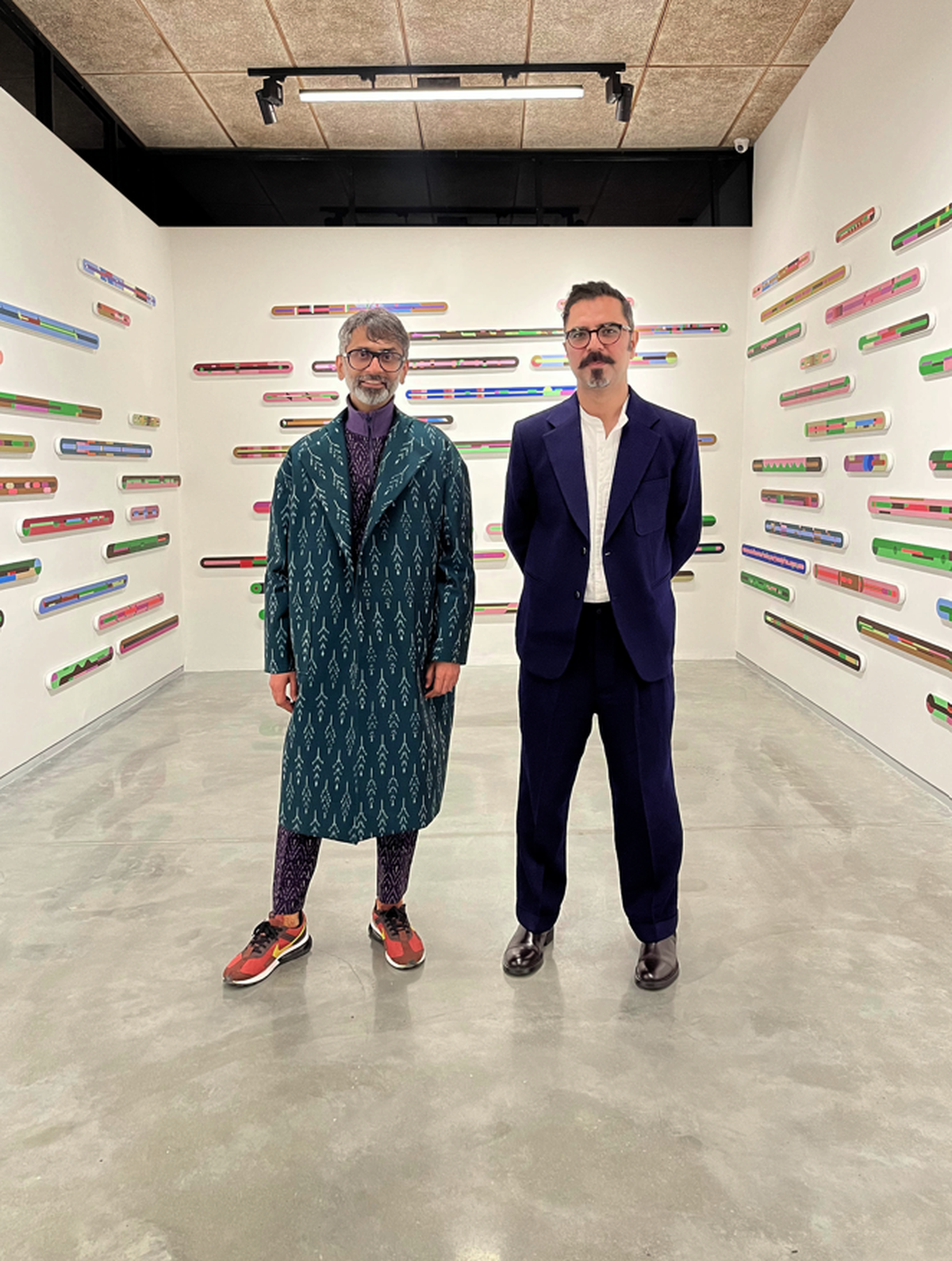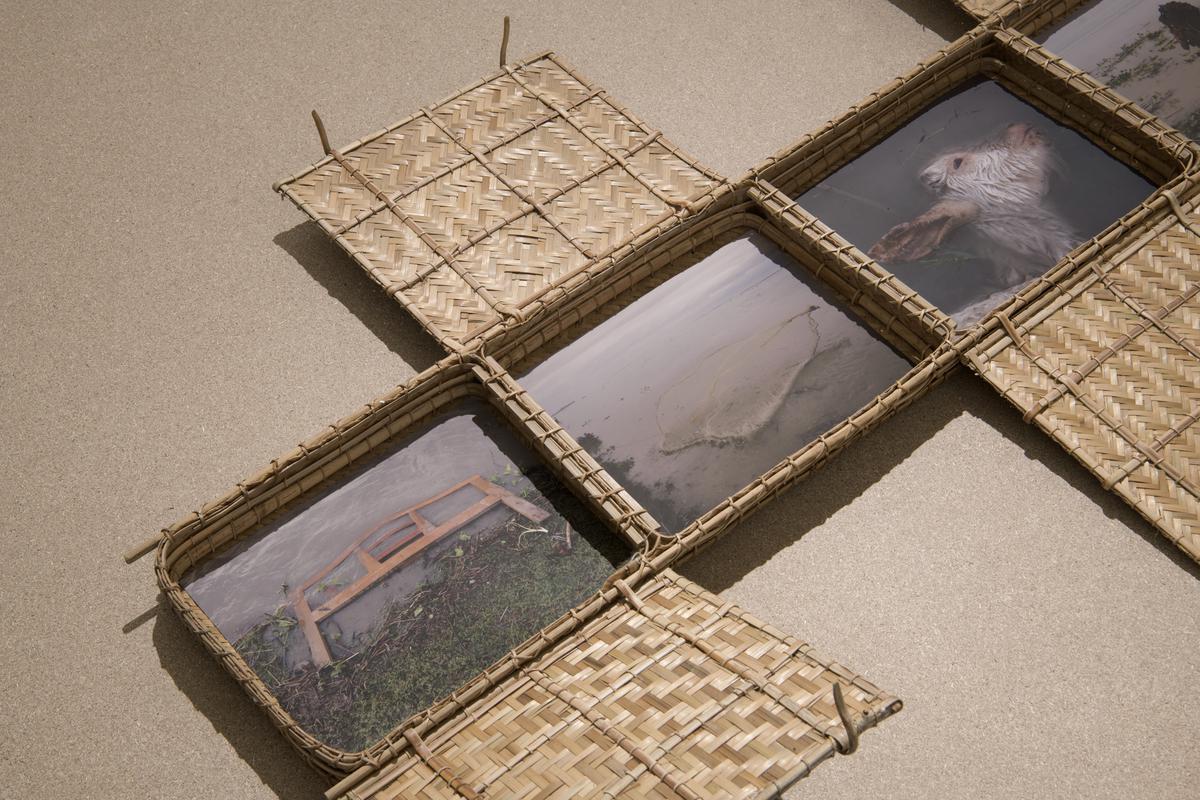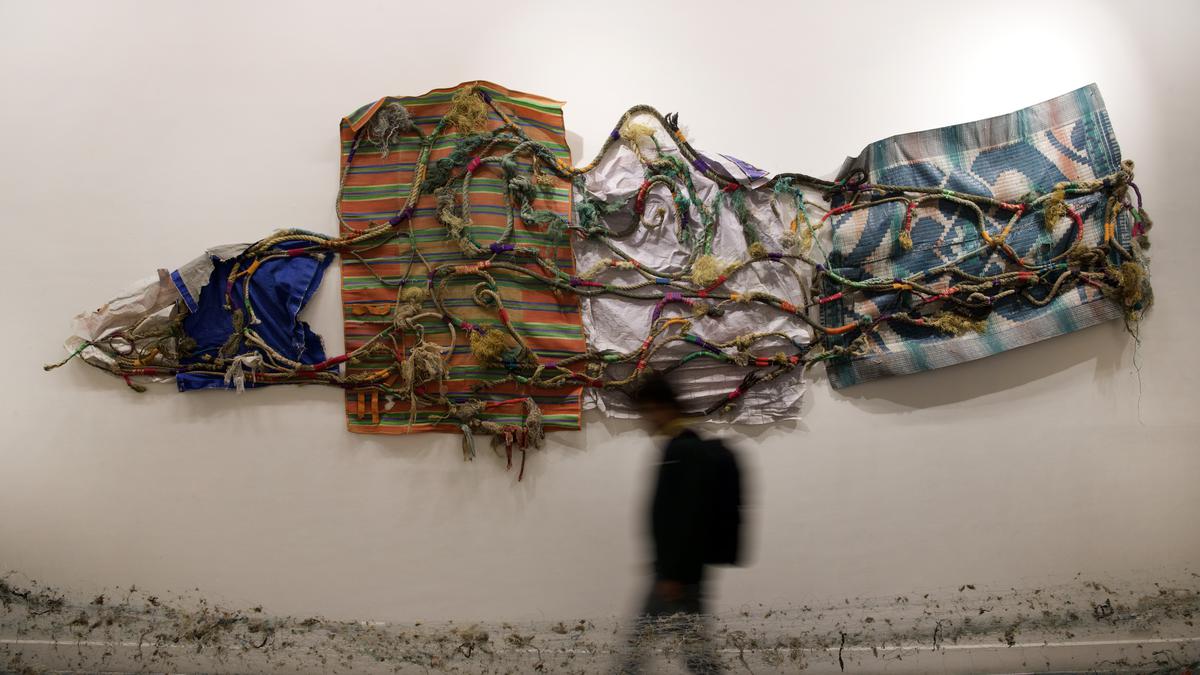British Columbia in Canada is home to temperate coastal rainforests, some of the oldest growths of their kind on the planet. When Manjot Kaur, a contemporary artist who spends her time between Chandigarh and Vancouver, began to make excursions there some years ago, she was struck anew by the greenery.
“I was born in Ludhiana, a very industrial, urban town in Punjab,” says Kaur, one of three selected fellows at Sustaina India, a unique new art exhibition with a focus on raising climate awareness, at Bikaner House in New Delhi. “I lived in Vancouver for two years, and as soon as I started to venture into the forest, I realised that it was not just trees. We are in symbiosis with them, there is reciprocity.”
Kaur’s observations have manifested in The Parliament of Forests, a video installation that seeks to highlight the idea of nature having rights of its own. “The goal of this project is to think about personhood for forests,” says the artist, who is inspired by the work of French philosopher Bruno Latour, American feminist academic Donna Harroway, and American eco-feminist Carolyn Merchant, among others.

Manjot Kaur’s The Parliament of Forests
| Photo Credit:
SND
Sustaina India’s first art exhibition is the result of 18 months of conversations between the Council on Energy, Environment and Water (CEEW), a New Delhi-based think tank, and the multi-disciplinary artists Jiten Thukral and Sumir Tagra. Born from the alarming research-based observation that eight out of 10 Indians now reside in districts vulnerable to extreme climate events, CEEW sought to fill the blank spaces between policy, awareness and on-ground implementation through artistic practice.
For this, they reached out to Thukral & Tagra who have, since the pandemic, been putting together climate change-oriented Game Plays — like board games, says Tagra “but another take on how to engage with people and communities, without any tech involved”.

Thukral & Tagra
The inter-connectedness of everything
In another room of Bikaner House, stands a part-mud, part-cement wall — artist Debasmita Ghosh’s Living With The Land, an art installation that tracks the after-effects of switching from mud to industrial material for building houses in the Kondh community of Orissa.
Visitors at Debasmita Ghosh’s Living With The Land

Living With The Land
| Photo Credit:
SND
Ghosh, who first ventured into this tribe’s hamlet in 2018, knew there was not going to be any solutions or answers to the questions she was asking the community. “What we wanted to show was the process and the journey that the women of the community are taking: the impact, the transitions, their feelings about it — how this impacted different aspects of their lives.”
Elsewhere, Mumbai-origin environmentalist and artist Rachna Toshniwal has draped a patchy fishing net over a table of what look like colourful tchotchkes, but are in fact an assortment of sculptural objects fashioned from the waste she (and the women of Naari Shakti SHG) has collected on the beaches of Alibaug. Titled There Is No Such Thing Called Waste, the installation is about “transformation”. “There is no waste in nature — everything gets recycled, it’s a closed loop,” says Toshniwal. The essence of this work, she says, is to remind ourselves of that inter-connectedness; but also to “restore dignity to that material that we discard, that the ocean gives back to us”.
Rachna Toshniwal’s There Is No Such Thing Called Waste
Alongside, the curators have also invited creatives from myriad fields into their sensorium. “[The chefs at Goa-based kitchen] Edible Archives are highlighting food and daily rituals, and our changing food practices, in their climate recipes; people can create their own menus to understand what winter does to our tongue and our gut,” says Tagra. “[Designer] Gaurav Jai Gupta’s piece, Kaalchakra, is inked with the PM 2.5 ink, and the entire piece took more than two-and-a-half years to build,” Tagra continues. “You can see the sense of labour and sense of taste.”
Heed the message
Thukral & Tagra have been preoccupied with climate change for a good eight years now, and continue to feel compelled to “create a system or open-source programs to help people understand that there can be a shift and more sensitivity to this”, as Tagra puts it. In the long run, they hope to see more mainstream conversation around climate change by pushing it in major fora, such as the India Art Fair, and in galleries and museums, both in terms of conception as well as the final message.
But can artistic practice do more than build awareness around the urgency of climate change? “As painters, we understand that poetic expression can be one aspect of this, the other aspect is problem-solving and exercise.” But their experience as artists and curators at platforms such as Sustaina India leaves them hopeful. “I think we in the art world can offer proof of concept,” concludes Tagra.
Sustaina India is on till February 15 at Bikaner House.
The writer is an independent journalist based in Mumbai, writing on culture, lifestyle and technology.
#Thukral #Tagras #Sustaina #India #trains #spotlight #climate #change



